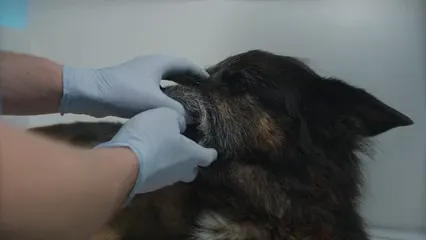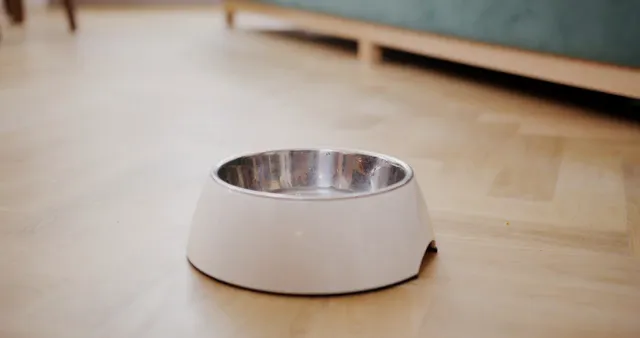Introduction
In the world of pet parenting, sharing food with your furry friend is a common delight. But before you toss your pup a cherry, you might want to hit the brakes! While cherries can be a juicy and tempting treat for humans, they come with a hefty amount of caution when it comes to our canine companions. This article dives deep into the question: Can dogs eat cherries?
Cherries, those delightful red orbs of sweetness, can make us drool. However, they carry significant risks for dogs. The danger lies not in the fruit itself but in the pits, stems, and leaves. These parts contain cyanide, a toxic substance that can pose serious health threats. Yes, you read that right—cyanide!
Many pet owners are unaware that cherry pits can become lodged in a dog’s digestive tract. This can lead to life-threatening intestinal blockages. As if that’s not enough to make you think twice, the stems and leaves are also toxic. So, what do you do if your dog eyes those cherries with longing?
Let’s cherry-pick the facts together! We’ll explore the risks, benefits, and everything in between. By the end, you’ll be well-informed about whether or not to share this fruity delight with your canine companion. So, grab a seat, and let’s get the scoop on cherries and dogs!

Summary of Key Points
– Safety Overview: Cherries can be harmful to dogs if not prepared correctly, particularly due to the presence of cyanide in the pits, stems, and leaves.
– Health Benefits: The flesh of cherries contains vitamins, fiber, and antioxidants, which can be beneficial in moderation.
– Dangerous Parts: The pits pose choking hazards and can cause intestinal blockages, while the stems and leaves are toxic.
– Symptoms of Poisoning: If ingested, dogs may show signs of distress such as vomiting, difficulty breathing, and lethargy.
– Alternatives to Cherries: There are safer fruit options that can provide similar health benefits without the risks associated with cherries. For example, you may consider blueberries, which are not only safe but also packed with antioxidants.
Speaking of blueberries, why not treat your dog to some delicious Dog Treats with Blueberries? They’re a tasty way to keep your pup healthy and happy!
Considering alternatives like blueberries can provide health benefits without the risks associated with cherries.
When it comes to cherries and our beloved pups, knowledge is key. Understanding the potential dangers and benefits can help you make the best choices for your furry friend’s health. Remember, a little caution goes a long way!

Can Dogs Safely Eat Cherries?
Understanding Cherry Composition
Fleshy Part vs. Pits and Stems:
Cherries are a sweet treat for humans, but they come with a warning label for our furry friends. The fleshy part of the cherry is generally safe for dogs in small amounts. This juicy goodness is full of flavor and can be a delightful snack. However, the pits and stems are a different story. They contain cyanide, a toxic substance that can lead to severe health issues. If you decide to share cherry flesh with your dog, ensure that all pits and stems are thoroughly removed. After all, no one wants a cherry pit surprise!
Nutritional Value:
So, what’s in that cherry flesh? It’s more than just sugar and water! Cherries are packed with vitamins A and C, which are essential for a strong immune system and good vision. They also provide antioxidants that help combat oxidative stress. Plus, cherries are a source of dietary fiber, which aids digestion. Just imagine your pup enjoying a tasty cherry while also getting a little health boost! But remember, moderation is key. Too many cherries can lead to tummy troubles.
And speaking of tummy troubles, you can help keep your dog’s digestive system in check with some Organic Banana Chips. They’re a crunchy, healthy snack that dogs love!

Risks of Feeding Cherries to Dogs
Cyanide Poisoning:
Now, let’s talk about the not-so-fun part: cyanide. This potent toxin is found in the pits, stems, and leaves of cherries. If ingested, it can interfere with oxygen delivery in the body, leading to serious health risks. Symptoms of cyanide poisoning in dogs can include labored breathing, bright red gums, and even seizures. If your dog manages to munch on a cherry pit, stay vigilant for these signs and contact your vet if you notice anything unusual.
Choking Hazards:
Aside from the cyanide conundrum, cherry pits pose another danger: choking. Small dogs are particularly at risk, as a pit lodged in their throat can cause panic and distress. Even if your pup swallows it whole, the pit can lead to intestinal blockages. Imagine a game of fetch gone wrong when your dog decides to “fetch” a cherry instead! Always monitor your dog closely if they’ve snuck a cherry treat, and play it safe by removing all cherry pits and stems before sharing.
In summary, while the fleshy part of cherries can be a fun treat for dogs, the risks associated with pits and stems can outweigh the benefits. Always prioritize your pup’s safety!

Health Benefits of Cherries for Dogs
Cherries can be a delightful addition to your dog’s diet, but only if prepared correctly. The key is to focus on the flesh of the cherry, which offers several health benefits. However, remember to keep the pits and stems far away from your furry friend!
Nutritional Components
Vitamins A and C:
Cherries are rich in vitamins A and C, crucial for your dog’s health. Vitamin A supports eye health, helping your pup see well, especially in low light. It also keeps their skin and coat looking shiny. On the other hand, vitamin C acts as a powerful antioxidant, boosting your dog’s immune system and helping to fend off illnesses. A strong immune system means fewer vet visits—hooray for that!
Fiber and Antioxidants:
Fiber is the unsung hero of digestion. It helps your dog maintain a healthy gut and can prevent constipation. Cherries are a good source of fiber, which can aid in smooth digestion. Antioxidants in cherries fight off free radicals, reducing inflammation and lowering the risk of chronic diseases. If your pup has been feeling a bit sluggish, a little cherry might just perk them up!

When to Consider Feeding Your Dog Cherries
Moderation is Key:
Before you start tossing cherries to your pup like confetti, let’s talk about moderation! Cherries should only be an occasional treat. Start by introducing a small piece of cherry flesh, ensuring it’s completely pitted and stem-free. This way, your dog can enjoy the fruity goodness without the risks that come with the toxic parts. Keep an eye on your dog’s reaction. If they love the taste, great! Just remember, a few cherries here and there are plenty.
In conclusion, cherries can be a safe and healthy treat for dogs when given with care. With their vibrant colors and juicy flavors, they can bring a spark of excitement to your dog’s snack time! Keep it pitted, keep it moderate, and your pup will be happy as a cherry!

What to Do If Your Dog Eats Cherries
Immediate Actions
Assess the Situation:
First things first! Take a deep breath and assess the situation. How many cherries did your pup munch on? Did they manage to chew on any pits or stems? This information is crucial for your vet. If it’s just a bite of flesh, chances are your dog will be fine. But, if your furry friend gulped down a whole cherry or, heaven forbid, the pit, that’s a red flag!
Also, consider your dog’s size. Smaller breeds are more susceptible to blockages and poisoning. If your dog is a petite pup, even one pit could spell trouble.

Monitoring Symptoms
Keep a close eye on your pooch after cherry consumption. Specific symptoms can indicate distress or poisoning. Watch out for vomiting, diarrhea, or lethargy. If you see any of these signs, it’s time to act!
Other red flags include:
- Difficulty breathing
- Dilated pupils
- Bright red gums
These symptoms can appear within 15 to 20 minutes of ingestion. If you notice any, don’t hesitate! Call your vet or an animal poison control center for guidance. Your dog’s health is the priority!

Seeking Veterinary Assistance
When to Call the Vet:
If your dog has ingested cherry pits, stems, or leaves, it’s best to err on the side of caution. Call your veterinarian immediately, especially if you notice any symptoms of cyanide poisoning or gastrointestinal distress.
Also, if your dog consumed a significant amount of cherry flesh, consult your vet. They might recommend inducing vomiting or other interventions to minimize risks. Remember, it’s always better to be safe than sorry!
Potential Treatments:
Your vet may take various actions depending on the severity of the situation. If they suspect cyanide poisoning, treatments may include inducing vomiting to eliminate any remaining toxins. Administering activated charcoal can help absorb toxins in the stomach.
In some cases, your veterinarian might monitor your dog for signs of distress for a few hours. If there are concerns about intestinal blockages, they may recommend imaging tests. If a blockage is confirmed, surgery might be necessary.
Overall, your vet is your best resource in these situations. They can provide tailored advice based on your dog’s size, the amount ingested, and observed symptoms. So, don’t hesitate to reach out!

Alternatives to Cherries
Dog-Safe Fruits
When it comes to fruit, not all options are created equal for our furry friends. If cherries give you pause due to their potential risks, fear not! There are plenty of delicious and safe alternatives your dog will love. Let’s take a look at some dog-safe fruits that can keep your pup healthy and happy.
- Blueberries: These tiny, nutrient-packed gems are not only safe for dogs but also loaded with antioxidants. They can help combat free radicals in your dog’s body, supporting overall health. Toss a few into your pup’s bowl, and watch them enjoy the burst of flavor. Just remember, moderation is key!
- Bananas: A classic favorite, bananas are rich in potassium and vitamins. They can provide a quick energy boost for your dog after a long walk or play session. Slice them up for a crunchy treat or mash them into their food for a tasty twist. Dogs generally love the sweetness! You can learn more about this in our guide on bananas.
- Apples: An apple a day keeps the vet away! Just make sure to remove the seeds and core, as these parts can be harmful. Apples are full of fiber and vitamins A and C, making them a healthy snack. Plus, the crunchiness can help clean your dog’s teeth. You can find out more about apples in our article on apples.
- Watermelon: On a hot summer day, nothing beats a slice of juicy watermelon. Just be sure to remove the seeds and rind. Watermelon is hydrating and low in calories, making it a great treat for pups looking to cool off. Dogs love the sweetness, and you’ll love the health benefits! For more information, check out our post on watermelon.
- Pineapple: This tropical delight is safe for dogs and packed with vitamin C. Pineapple can aid digestion thanks to its natural enzymes. Just be cautious with the amount, as it can be a bit sugary. A few small chunks are perfect for a fun, refreshing snack! You can read more about pineapple in our guide on pineapple.

And if you’re looking for a fun way to keep your dog’s water cool on hot days, consider a Dog Water Fountain! It keeps their water fresh and flowing.

Benefits of Alternatives
Choosing these dog-friendly fruits over cherries can provide numerous health benefits without the associated risks. For example, blueberries can help support cognitive function, especially in older dogs, while bananas provide a great source of energy. Apples add fiber to your dog’s diet, promoting better digestion. Watermelon keeps your pup hydrated, and pineapple can help soothe upset tummies.
In conclusion, opting for these safer fruit alternatives can ensure your dog enjoys tasty snacks without any health concerns. So, ditch the cherries and treat your furry friend to some delicious, healthy fruit options instead! Your pup will thank you with happy tail wags and playful barks.

Conclusion
In summary, while cherries can be a tasty treat for dogs, the risks associated with their pits, stems, and leaves make them a less-than-ideal choice for canine snacks. If you choose to share cherries with your pup, ensure they are pitted and given in moderation. Always be aware of alternative fruits that can provide both safety and health benefits. Your furry friend deserves the best—so why not choose options that keep them healthy and happy?
By incorporating safer fruits like blueberries, bananas, and apples into your dog’s diet, you can substitute the risky cherry treat. These alternatives not only provide essential vitamins and minerals but also keep your dog excited about snack time. Remember, a little creativity in their diet can go a long way in enhancing their overall health.
So, the next time you’re enjoying a bowl of cherries, think twice before sharing. Instead, reach for a dog-safe fruit that guarantees a wagging tail and a happy pup. After all, keeping our furry companions safe is the top priority!

FAQs
Are cherries safe for dogs?
Yes, but only if the pits, stems, and leaves are completely removed.
What should I do if my dog eats a cherry pit?
Monitor them for symptoms and contact your vet if you notice any signs of distress.
Can dogs eat maraschino cherries?
No, they are not safe due to high sugar content and preservatives.
What are the symptoms of cyanide poisoning in dogs?
Look for signs like difficulty breathing, dilated pupils, and lethargy.
Please let us know what you think about our content by leaving a comment down below!
Thank you for reading till here 🙂
All images from Pexels





